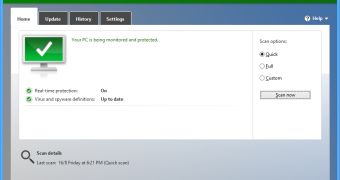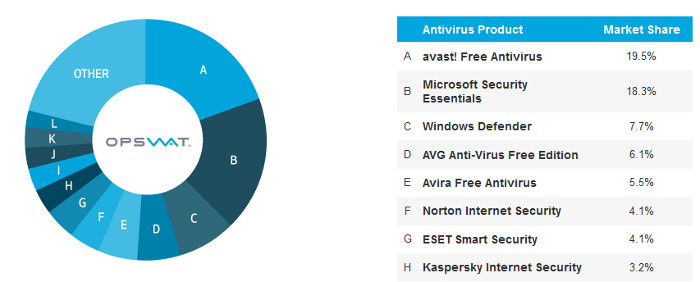Windows 8 comes with Windows Defender installed by default, as Microsoft has made the old anti-spyware product a full-featured anti-virus with real-time protection and virus definition updates.
But a report conducted by OPSWAT shows that most Windows 8 users actually disable Windows Defender and go for a third-party security product, in most cases offered with a freeware license.
At this point, Avast! Free Antivirus has a 19.5 percent market share, according to August 2013 data, while Microsoft Security Essentials comes next with 18.3 percent. Windows Defender is way behind with 7.7 percent, followed by AVG Anti-Virus Free Edition and Avira Free Antivirus with 6.1 and 5.5 percent, respectively.
“A high proportion of Windows 8 users in this data set have opted to disable Windows Defender and, in most cases, have installed other antivirus products that are actively scanning their machines,” the study reveals.
“After further filtering, the antivirus product data shows that about 65% of Windows 8 users have an additional antivirus product (with real time protection enabled) on their machines.”
As far as anti-virus vendors are concerned, Microsoft tops the market with a share of 25.8 percent thanks to Security Essentials and Windows Defender. Avast comes second with 23.6 percent, while AVG and Symantec are trailing behind with 9.1 and 8.4 percent, respectively.
As far as anti-virus products with real-time protection enabled, Microsoft’s Security Essentials tops the charts with 98 percent, while Avira Free Antivirus is very close with 97.4 percent. McAfee is third with 95.6 percent, followed by Norton Internet Security with 94.9 percent.
“RTP status can be seen as a metric for product usability and/or effectiveness; if a user views an antivirus product as effective and easy to operate, the user is more likely to have that product actively running on his or her machine,” the report states.
65.2 percent of the Windows Defender users have already installed another anti-virus with real-time protection enabled, while only 14.3 percent of Security Essentials consumers did the same.

 14 DAY TRIAL //
14 DAY TRIAL // 
